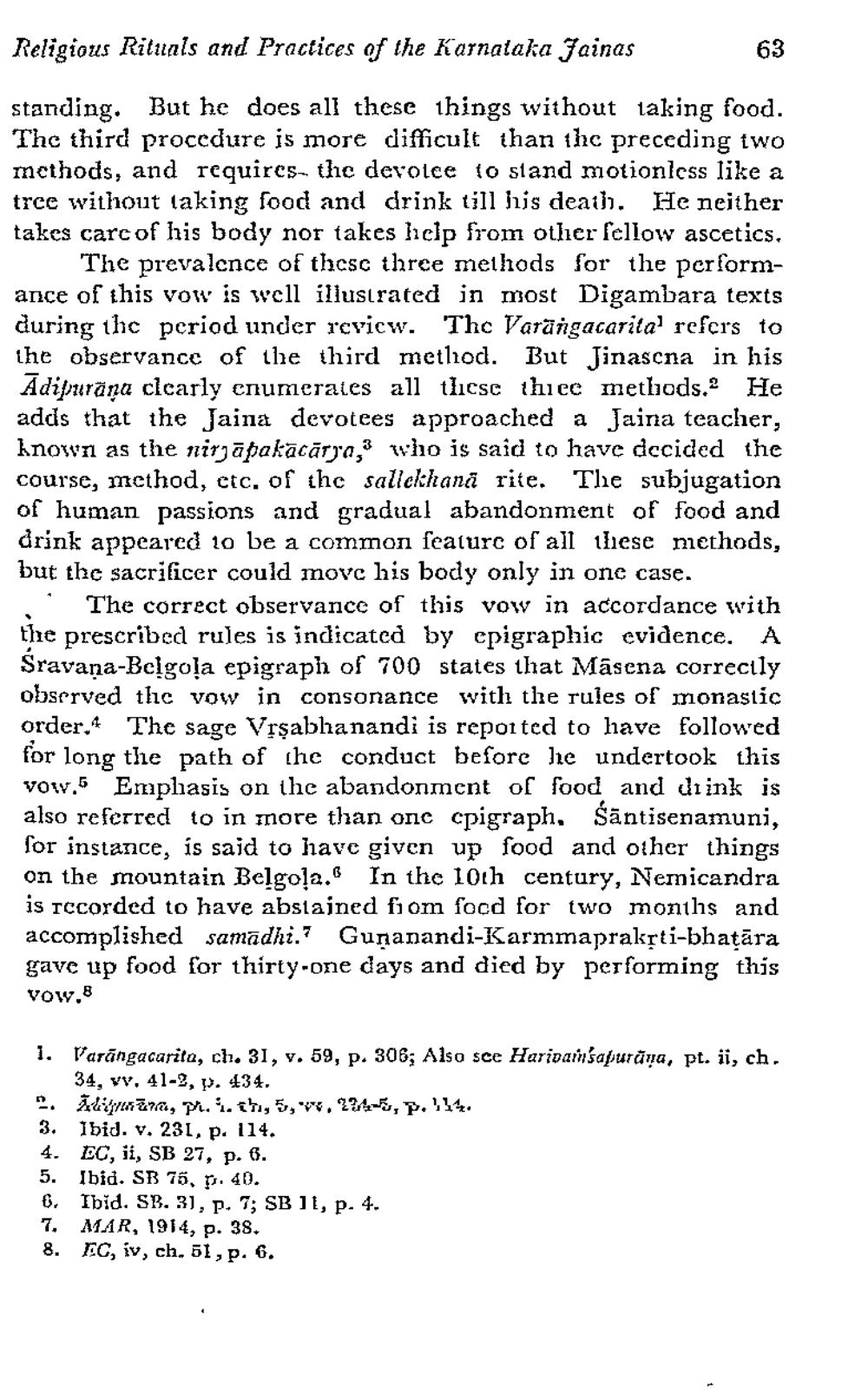________________
Religious Rituals and Practices of the Karnataka Jainas
63
standing. But he does all these things without taking food. The third procedure is more difficult than the preceding two mcthods, and requires the devoice to stand motionless like a tree without taking food and drink till his deau. He neither takes carcof his body nor takes lielp from other fellow ascetics,
The prevalence of these three methods for the performance of this vow is well illustrated in most Digambara texts during the period under revicw. Thc Varūngacarita' refers to the observance of the third metliod. But Jinascna in his Adipurāņa cicarly cnumerates all these thiec methods. He adds that the Jaina devotees approached a Jaina teacher, known as the nirgāpakācārya, who is said to have decided the course, method, etc, of the sallekhana rite. The subjugation of human passions and gradual abandonment of food and drink appeared 10 be a common featurc of all these methods, but the sacrificer could move his body only in one case. . The correct observance of this vow in accordance with the prescribed rules is indicated by epigraphic evidence. A Sravana-Belgola epigraph of 700 states that Masena correctly observed the vow in consonance with the rules of monastic order. The sage Vrşabhanandi is reported to have followed for long the path of the conduct before he undertook this vow,5 Emplasis on the abandonment of food and diink is also referred to in more than one cpigraph. Sāntisenamuni, for instance, is said to have given up food and other things on the mountain Belgola. In the 10th century, Nemicandra is recorded to have abstained from focd for two months and accomplished samadhi.? Gunanandi-Karmmaprakrti-bhatāra gave up food for thirty-one days and died by performing this vow.8
1. Varāngacarita, ch. 31, v. 59, p. 306; Also sce Haripamsapurðya, pt. ii, ch. 34, vv, 41-2, p. 434.
āna, p. 1. th., 5, v. 27-, p.14%. 3. Ibid. v. 231, p. 114. 4. EC, ii, SB 27, p. 6. 5. Ibid. SB 75, p. 40. 6. Ibid. SB. 3), p. 7; SBI, p. 4. 7. MAR, 1914, p. 38. 8. AC, iv, ch, 51, p. 6.




